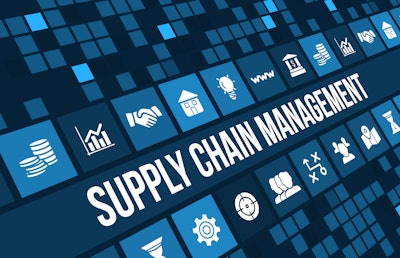
Amazon Web Services, Inc. (AWS) announced four new capabilities for AWS Supply Chain to expand existing data lake, demand planning, and machine learning (ML)-powered insights with new supply planning, collaboration, sustainability, and generative AI capabilities to support upstream supply chain processes.
“Customers are excited that we're making our extensive supply chain experience available to them as a managed service. That, combined with our industry leading analytics and ML means customers can now track and plan for products more predictably, from manufacturing facilities to final points of distribution,” says Diego Pantoja-Navajas, VP of AWS Supply Chain. “With AWS Supply Chain, our customers have been able to increase inventory visibility and execute on insights to mitigate supply chain risks, reduce cost, and improve customer satisfaction. And thanks to the power of generative AI, customers can ask Amazon Q in AWS Supply Chain what is happening across their supply chains and receive intelligent, conversational answers to complex questions.”
Key takeaways:
- AWS Supply Chain Supply Planning draws on Amazon’s expertise in developing ML for its own operations and applies this knowledge to create sophisticated supply planning models that can accurately predict the right levels of inventory needed across facilities. Supply Planning uses the demand forecasts created by AWS Supply Chain Demand Planning, along with data about product, facility, bill of materials (BOM), and inventory. This helps customers determine how many units to order, when to place the order, and where to position inventory, by recommending actions such as the creation of purchase orders or inventory transfer requests.
- AWS Supply Chain N-Tier Visibility extends customers’ visibility and insights not only to their direct relationships, but also to multiple tiers of external trading partners. Customers can invite and onboard trading partners in just a few clicks. Trading partners can then automate communication and improve their own forecasts. For example, customers can share purchase orders and demand forecasts with their trading partners, and then track the status of those purchase orders or changing inventory levels, all from within AWS Supply Chain N-Tier Visibility. The updated supply plans and purchase orders are exported to Amazon Simple Storage Service (S3), so customers can integrate them into their own enterprise resource planning (ERP) systems. AWS Supply Chain chat and messaging capabilities make collaboration even easier across the entire supply chain. For example, if a component shipment is delayed, an inventory manager can message a supplier to identify a workaround within the AWS Supply Chain application.
- AWS Supply Chain Sustainability creates a more secure and efficient way for sustainability professionals to obtain documents and datasets from their supplier network. These customers can request, collect, and export artifacts, such as product life cycle assessments, certificates on product safety, or reports on hazardous substances used, at any point in the supply chain. Customers can also upload their own data collection form for their suppliers to document any sustainability issue, utilize a standard workflow process to send their suppliers reminders to answer data requests, and communicate necessary changes based on supplier responses. These capabilities will help customers provide compliance information for environmental and social governance (ESG) regulations with a single, auditable record of the data.
- Amazon Q in AWS Supply Chain is a generative AI assistant powered by Amazon Bedrock that provides a natural language interface in the AWS Supply Chain application so that customers can query data within the AWS Supply Chain Data Lake and receive intelligent answers to “what?” and “why?” and “what if?” questions. Amazon Q can be tailored to a customer’s business and can also visualize outcomes of complex scenarios and the tradeoffs between different supply chain decisions.




















